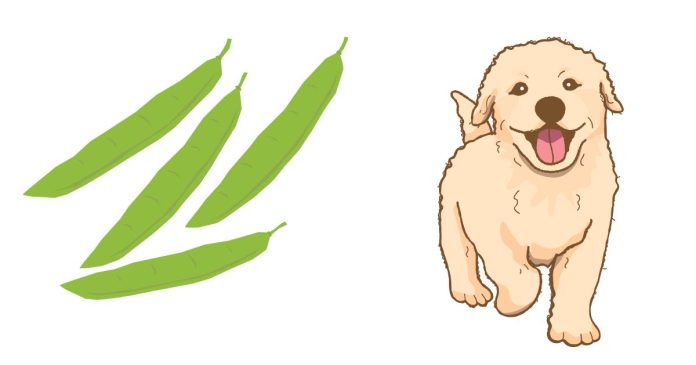Yes, dogs can eat green beans! In fact, they can be a healthy and low-calorie snack for your dog when offered in moderation. Green beans are packed with nutrients and can offer several benefits, but there are a few important considerations to keep in mind.
Benefits of Green Beans for Dogs:
- Low in Calories: Green beans are a great treat for dogs that are overweight or on a calorie-restricted diet. They’re low in calories but high in fiber, which can help your dog feel full without adding extra weight.
- Nutrient-Rich: Green beans are packed with vitamins and minerals that can support your dog’s overall health, including:
- Vitamins: A, C, K, and some B vitamins.
- Minerals: Manganese, iron, and calcium.
- Fiber: Helps with digestion and can improve bowel health.
- Supports Weight Loss: The fiber content in green beans helps regulate digestion and can assist in weight management, making them an excellent addition to a dog’s diet, especially for those needing to shed a few pounds.
- Good Source of Antioxidants: The antioxidants in green beans can help fight oxidative stress and may support your dog’s immune system.
- Hydration: Green beans have a high water content, which helps keep your dog hydrated, especially if they are eating dry food.
Risks of Green Beans for Dogs:
While green beans are generally safe for dogs, there are a few risks to be aware of:
- Choking Hazard:
- Whole or Large Pieces: If you give your dog whole or large chunks of green beans, they could become a choking hazard, especially for smaller dogs. It’s best to chop them into smaller, bite-sized pieces.
- String Beans: String beans (like green beans that aren’t fully chopped or cut) can sometimes get stuck in a dog’s throat, so it’s important to remove any strings and cut the beans into small, manageable pieces.
- Gas or Upset Stomach:
- Some dogs may experience gas or bloating if they consume too many green beans, especially if they’re not used to high-fiber foods. Introduce them gradually and monitor for any digestive upset.
- Sodium Content:
- Canned Green Beans: Avoid giving your dog canned green beans unless they are labeled as having no added salt. Excess salt can be harmful to dogs and cause dehydration or other health problems. Opt for fresh or frozen green beans instead.
- Allergies or Sensitivities:
- Although rare, some dogs may be sensitive to certain vegetables. If you notice any unusual symptoms (vomiting, diarrhea, or itching) after giving your dog green beans, discontinue feeding them and consult your vet.
How to Prepare Green Beans for Dogs:
- Fresh or Frozen: Fresh or frozen green beans (without any seasoning or sauces) are the best choice for your dog. They can be served raw, but lightly steaming or boiling them can make them easier to digest and gentler on your dog’s stomach.
- No Added Salt or Seasoning: Never give your dog green beans that are seasoned with salt, butter, garlic, or onion, as these ingredients can be toxic to dogs.
- Avoid Canned Beans: As mentioned, canned green beans often contain added salt, which is harmful to dogs.
Portion Size:
- Green beans should be given as an occasional treat, not a main part of your dog’s diet. For most dogs, a few small pieces of green beans (about 1-2 tablespoons) are enough.
- Always start with small amounts to see how your dog reacts, especially if it’s their first time trying green beans.
Conclusion:
Green beans can be a healthy, low-calorie treat for your dog, offering a variety of nutritional benefits. They can support weight management, provide hydration, and improve digestion. However, it’s important to prepare them properly (fresh or frozen without seasoning) and to serve them in moderation to avoid any potential digestive issues or choking hazards.
As with any new food, it’s a good idea to introduce green beans gradually into your dog’s diet and observe for any adverse reactions. If you have any concerns about your dog’s diet or health, consult with your veterinarian.
Related posts:
- What does ringing in the ears mean spiritually?
- What Colors Do Blue and Green Make?
- How Long Does Raw Chicken Really Last in the Fridge?
- What are some amazing and memorable Valentine’s Day ideas that will leave a lasting impression?
- What is the definition of ‘friends with benefits?
- What is the difference between a bachelor’s and a degree?


